The woman who pioneered distilling in Wyoming
By Georgie CollinsBy harnessing her background in law, rancher Kate Mead, alongside her husband Brad, pioneered the legalisation of spirit distillation in Wyoming, US. We sat down with her to discuss her part in changing the legislation and creating the state’s first legal Bourbon.
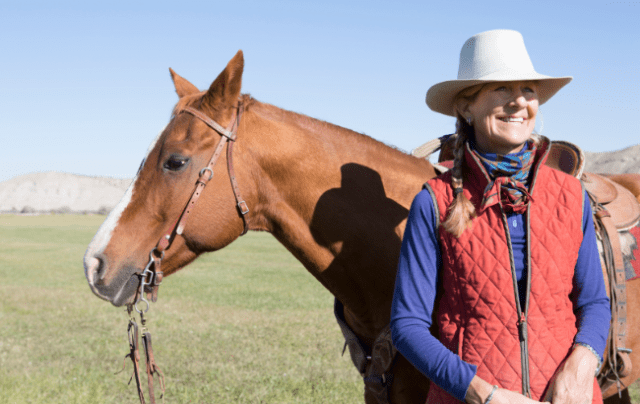
“My husband’s family has been in the ranching business for many, many years,” Kate tells The Spirits Business. “We raise Black Angus cattle, and that has been the main family focus over many, many years.”
After finding a ranch in the central part of the state of Wyoming, “which is quite a bit warmer than where we live”, the pair purchased it with the view of taking the cows there in the winter. But, she says, “farmers and ranchers are always looking to diversify their operations, so when we purchased this additional ranch in the warmer climate, I started looking at potentially growing grapes, because nobody else does that in Wyoming, and it’s at a very low elevation – 3,000 feet compared to where we live, which is almost 7,000 feet – and my husband and I got to talking about it, and he said: ‘You know what would be much better than wine? Making whiskey’.”
With no background in distilling or whiskey production, Brad took it upon himself to travel to Kentucky to investigate what it would take to produce Bourbon. “He did this several times, and talked to some really great players in the whiskey business. Bill Samuels Jr, [CEO and president of Makers Mark], gave him some of his time to talk about it, and Max Shapiro, chairman of Heaven Hill, spoke to him about making whiskey. Both tried to talk him out of it, which was nice of them. But, you know, sometimes when people try to talk you out of something, you get more embedded in it.
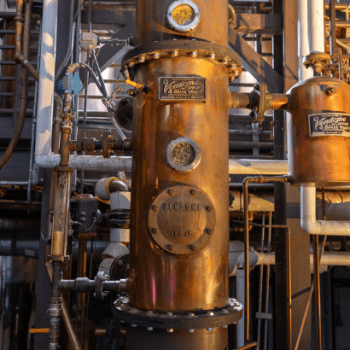
“So finally, Brad went one last time to Kentucky, and I still thought it was just sort of a pipe dream until he came home and he said, ‘I’ve bought a still’. So I’m thinking, he’s bought a little still. I said: will it fit in our garage? And he said, ‘no, it’s 38 feet tall’ – it was a column still that he ordered from Vendome Copper in Louisville, Kentucky. And so then I knew, oh, this is serious.”
Wyoming’s first legal distillery
One fly in the ointment for the Meads was the fact that making whiskey, or any spirit for that matter, in the state of Wyoming was not yet legal.
“I’m a lawyer, and so is my husband, but I was still practicing law while he was running the ranch, so we started looking into what we would need to do in order to start a distillery in Wyoming. We had to work with the legislature to make it legal for us to have a distillery in Wyoming, and to make it legal for us to have a visitor centre with our distillery.
“Wine had some presence in Wyoming – there were some tiny vineyards, and they had licensed those folks, so it wasn’t really a big stretch. But I think people looked at us like we were crazy to want to start a distillery here. We got distillery license number one, but you know, going through the federal system to get the distillery legalised, they will not even participate with you until you are ready to make whiskey. So you put all this time and energy into building and putting together a distillery, and they won’t tell you if you’ll be able to be licensed,” she explains, noting that the parameters of the build specifications are provided, but you won’t know until its built whether it has all been in vain or not.
“We were a little concerned, because we kept hearing from the people in Kentucky that you can’t make Bourbon anywhere in the United States except Kentucky. But that is not the case, of course, but back then, in the early 2000s, they were sort of walking around being bullies about it. And so we just continued.”
Kate explains that to facilitate the 38-foot-tall still, the distillery needed to be large. “We designed it so it looked like a grain silo, so it blends into the countryside, because there’s a lot of grain silos there.”
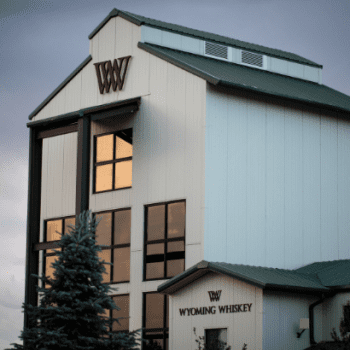
Kate notes that “it’s a pretty good grain-growing area of our state, which made it handy for us, because we get all our corn, wheat and malted barley right in the area of where we have the distillery, within 100 miles.”
Keeping production materials local was important to the couple, who value sustainability and their local community.
“Nowadays we just have one grower who grows all of our grains for the distillery, and he also grows grains for other distilleries around the state. He sort of found this niche, which is great, but he started with us.”
The distillery sits close to the Bighorn River in the coal town of Kirby in Hot Springs County, which boasts a population of 76 according to the town sign that sits at the entrance to the town.
“It’s called Hot Springs County because it has a lot of geothermal activity there, and one thing that was very helpful for the town of Kirby when we first got started was we were shipping in our water from a well that was about 30 miles north of us. We would take a tanker truck up there to get the water and bring it back down to the distillery.”
The water in this limestone well, she says, was very deep, and experts at the University of Wyoming estimated it to be approximately 500 years old. Then, the bigger towns on both sides of Kirby needed more potable water, and started expanding that well system and piping water to the communities. “They were just going to bypass Kirby because it’s too small and there wasn’t enough taps there, but because we had Wyoming Whiskey there, we got them to furnish water to Kirby, which helped everybody in the community, because the water previously had been kind of sulphury because of the geothermal resource that underlies all that area. So it was great for people in Kirby, because finally they got really wonderful water, and we got water piped right to the distillery.”
However, it isn’t always possible for materials to be sourced from within the state, Kate says. “One of the problems with malted barley is there’s no malting floor in the entire state of Wyoming. So our farmer takes the barley up to Great Falls, Montana, where Malteurop malts it, and then we put it on a truck and bring it back down to the distillery.”
In addition, the company also uses French white yeast, and sources its casks from a family-owned cooperage in Missouri called the Independent Stave Company.
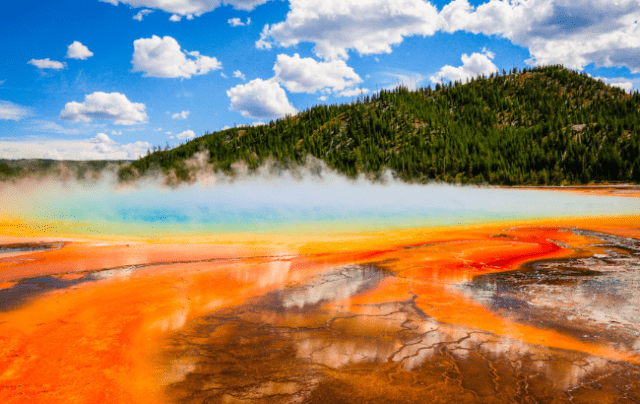
The next battle
The distillery was granted its license in 2008, and Wyoming Whiskey began operations in 2009.
However, Kate says that they hadn’t anticipated the success they would see with the brand, and that, twinned with the area’s popularity with tourists on account of its proximity to Yellowstone National Park, would create a greater need for additional tasting rooms at the distillery.
“We asked for one tasting room, and mostly that was just because our imagination wasn’t any broader than that. But as it turns out, you really need more than one tasting room, and the wineries have been able to have as many as they want.”
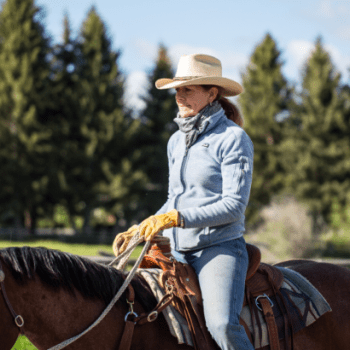
However, with the establishment of the Wyoming Distillers Guild in 2015, which is dedicated to the advancement, unity and long-term health of the Wyoming craft distilling industry, a second tasting room was granted.
“We all went together to get at least two more tasting rooms available for distillers. To me, it should be unlimited and let the market decide. But our legislators, and the group of liquor stores [in the area], feel like we would be competing, and they don’t like that.”
Those two tasting rooms are located in Jackson Hole, which is a big tourist area with 4.5 million people passing through every year to see the parks and wildlife, and at the distillery in Kirby, which boasts a busy road that goes by it as a link to Yellowstone Park.
“All the all the distilleries in Wyoming joined in that effort to get the legislature to allow us to have a second tasting room. We worked together.”
However, Kate isn’t done campaigning for change within the state, or within the spirits industry as a whole.
“I think one of the real issues that is facing all alcohol in the US is the methodology for selling liquor, called the three tier system, which was brought in after Prohibition. You have your manufacturers like us, you have your distributors, and then you have your retailers, and never the three shall meet.”
As a result of the system, Wyoming Whiskey is not able to ship its Bourbon directly to consumers. “We cannot ship at all, and that’s sort of the next big issue that’s facing the liquor industry in the US is to provide the ability for manufacturers to ship directly to people. The wine people can do that. Wineries can ship up to two cases a year to any household. So we’re hoping that that will get some traction across the US, so that we’ll be able to do that, and it will really help small operations like us.”
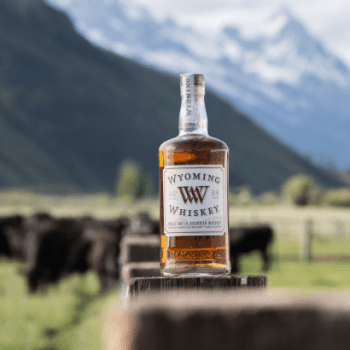
Edrington play and portfolio
As it stands, Wyoming Whiskey is distributed nationwide. This wider reach is aided by the involvement of The Macallan owner Edrington, which became a majority shareholder in the company in 2023, building on the 35% stake it had previously taken in the brand in 2018. It is currently the only American whiskey brand in the firm’s stable. So what did the luxury spirits firm see in this pioneering whiskey distillery?
Due to the temperature fluctuations in the state, which sees snow-covered winters and desert hot summers, the barrels that age the whiskey see huge fluctuations throughout the year, resulting in a whiskey that appears to age faster.
Kate explains: “Wyoming is super dry, so it’s quite a bit different than you would find in the southern states with regards to terroir. You know, our corn is grown literally on the desert. It would shock you to see when the corn is planted, that you would actually be able to grow corn on this area that just looks like complete desert, nothing growing there. So, of course, you have to have a lot of water to do that. And our grower has to use a lot of irrigation water to make the corn grow, but that also brings with it a certain flavour profile.
“But for us, the most important thing is that water source, and that limestone water that we get from those ancient wells and the time it takes to age the product.”
With more than 15 years of whiskey production under its belt, the distillery now has an extensive portfolio of whiskeys, with a stable of classic releases that includes its Small Batch Bourbon and a Double Cask release.
In addition, the distillery has its National Parks series which is said to reflect the unmatched beauty of the landscape that surrounds the distillery.
The series, Kate says, has been mutually beneficial for Wyoming Whiskey and the National Parks, as each year they create special edition bottles featuring historical artwork from parks such as Yellowstone and Grand Teton, with a portion of proceeds from each bottle sold going to support the parks. While the annual contribution is modest at around US$150,000, Kate emphasises that every little bit helps the parks, which struggle with limited federal funding.
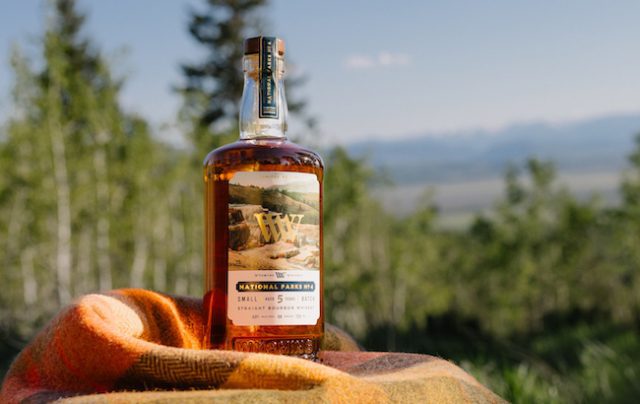
In addition, the collaboration allows Wyoming Whiskey to showcase beautiful park artwork on their labels, making the whiskeys great collector’s items while contributing to park conservation efforts.
Going forward, Kate confirms there are no plans to diversify into the American single malt category, but rather her ambitions for the brand lie in it becoming internationally recognised, with distribution in global markets.
“I think that that would really be my hope, that ultimately it would be kind of an international brand. Now, maybe not a huge one, because I think there are limitations on what we can do with this distillery, but that’s what I’m kind of hoping for.”
Above everything, though, Kate says she wants the whiskey to help people learn more about Wyoming, and sees the potential of the brand’s National Park-themed labels attracting global interest and helping to tell the story of Wyoming’s natural beauty to a worldwide audience.
Related news
World Spirits Report 2025: American whiskey
